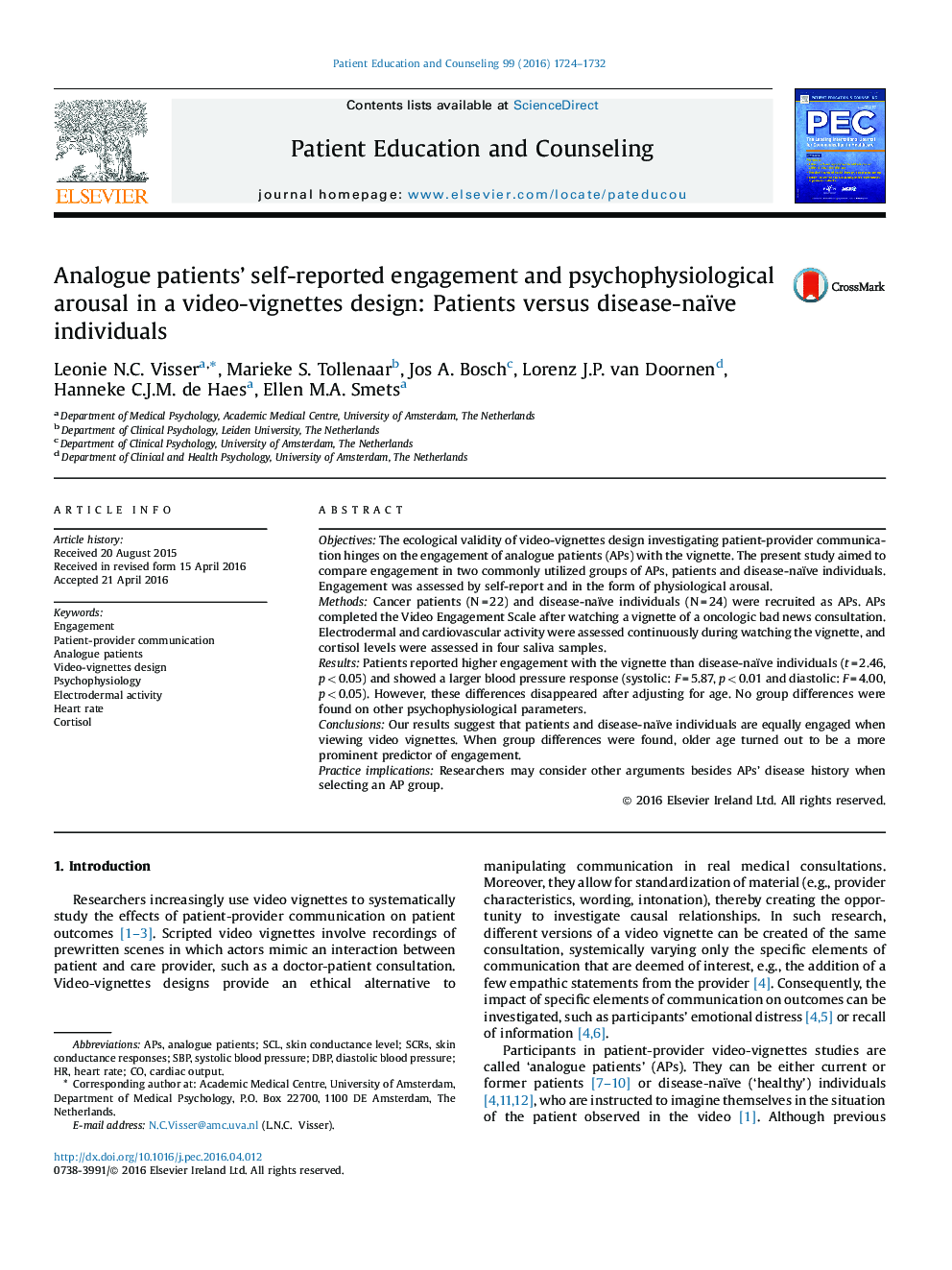| Article ID | Journal | Published Year | Pages | File Type |
|---|---|---|---|---|
| 3813488 | Patient Education and Counseling | 2016 | 9 Pages |
•For a video-vignette design to be ecologically valid, analogue patients (APs) should be engaged.•Patients and disease-naïve individuals were compared on their engagement with the vignette.•Engagement was assessed by using self-report and in the form of psychophysiological arousal.•Being (former) patient or disease-naïve was not a major determinant of APs’ engagement.•Older age was associated with higher self-reported engagement and blood pressure.
ObjectivesThe ecological validity of video-vignettes design investigating patient-provider communication hinges on the engagement of analogue patients (APs) with the vignette. The present study aimed to compare engagement in two commonly utilized groups of APs, patients and disease-naïve individuals. Engagement was assessed by self-report and in the form of physiological arousal.MethodsCancer patients (N = 22) and disease-naïve individuals (N = 24) were recruited as APs. APs completed the Video Engagement Scale after watching a vignette of a oncologic bad news consultation. Electrodermal and cardiovascular activity were assessed continuously during watching the vignette, and cortisol levels were assessed in four saliva samples.ResultsPatients reported higher engagement with the vignette than disease-naïve individuals (t = 2.46, p < 0.05) and showed a larger blood pressure response (systolic: F = 5.87, p < 0.01 and diastolic: F = 4.00, p < 0.05). However, these differences disappeared after adjusting for age. No group differences were found on other psychophysiological parameters.ConclusionsOur results suggest that patients and disease-naïve individuals are equally engaged when viewing video vignettes. When group differences were found, older age turned out to be a more prominent predictor of engagement.Practice implicationsResearchers may consider other arguments besides APs’ disease history when selecting an AP group.
